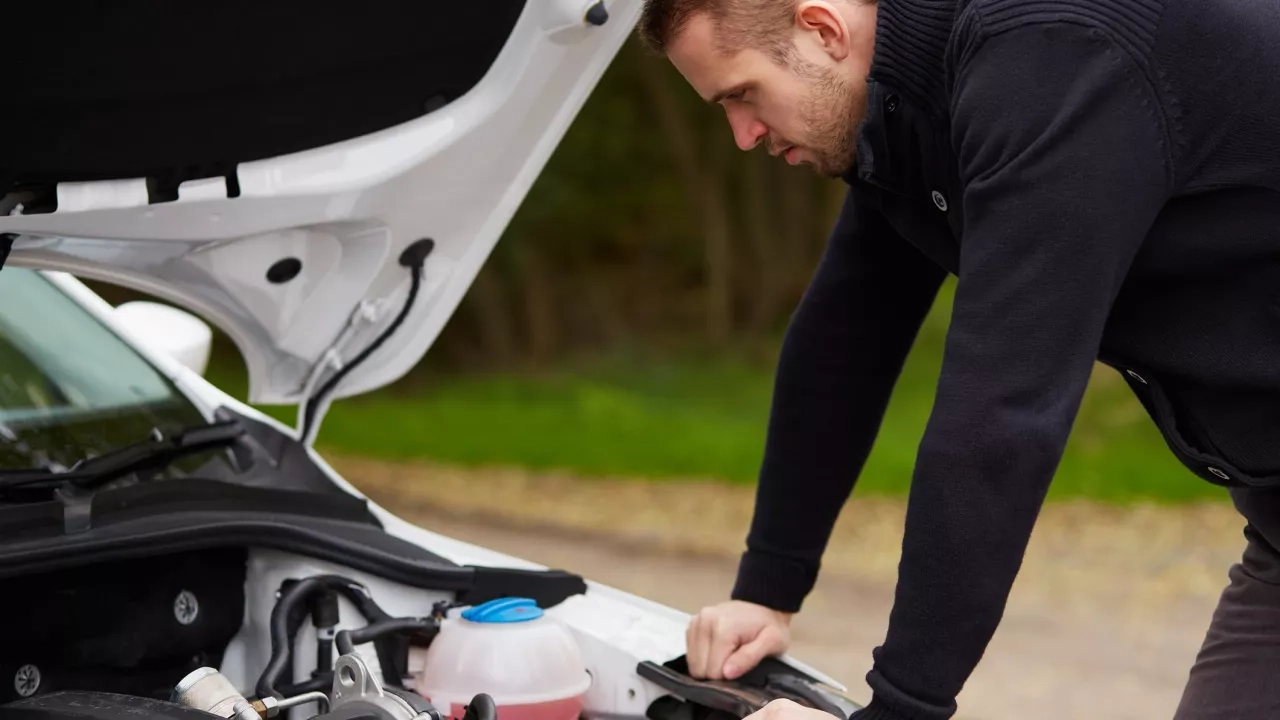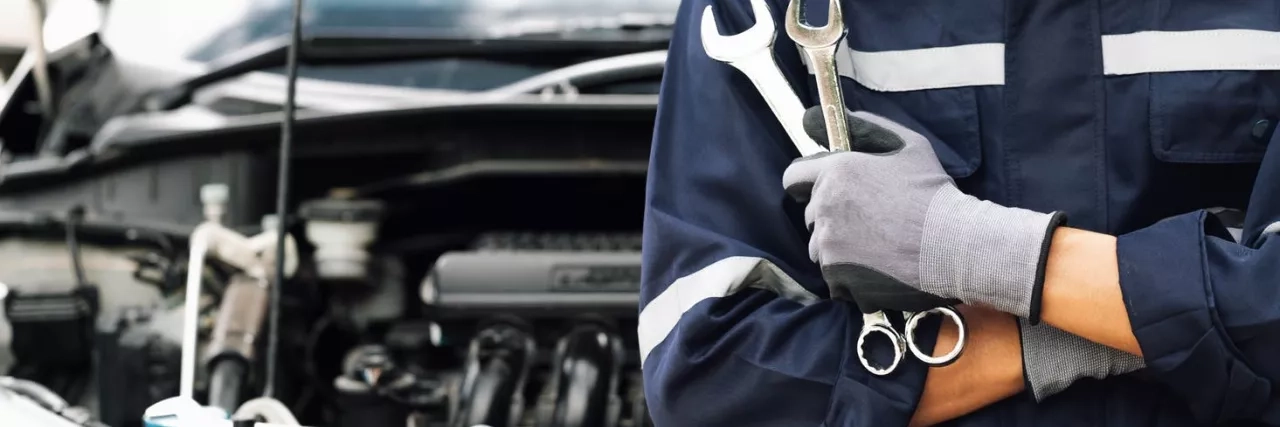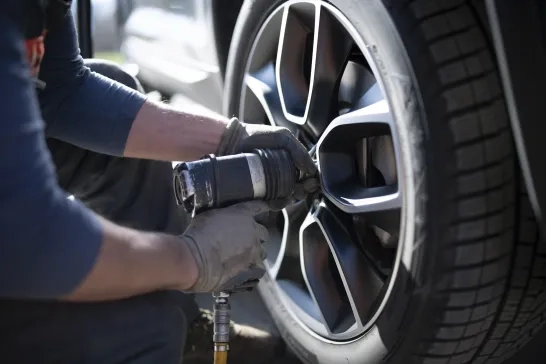
We're your best resource
Our expert vehicle care and maintenance tips can help Members gain valuable advice and guidance.
Here's our top car care tips
Following your vehicle's maintenance schedule is a good idea. The schedule is determined by the manufacturer and is an excellent way to keep on top of your car's health. Plus, it can also be valuable if a warranty issue arises, and proof of maintenance was required.
These are some of the items that should be checked on your vehicle prior to embarking on longer excursions:
- All fluid levels and filters
- Cooling system
- Hoses for cracks, softness and bulges
- Drive belts for cracks and proper tension
- Tires for signs of abnormal wear, proper pressures (including the spare) and any obvious cracks or bulges
- All brake, suspension and exhaust components
- Air conditioning system
- Engine including ignition, fuel and electrical systems (have an engine analysis completed to check)
- Always make sure a service technician performs a road test on your vehicle to check for any out-of-the-ordinary problems, such as strange noises and vibrations
It is a good idea to go by your manufacturer's maintenance schedule when determining how often to have your oil changed. If you have an older vehicle and do not have a maintenance schedule as a reference, standard practice is to have your oil changed every 5,000 kms or every three months.
The Ontario Consumer Protection Act regulates motor vehicle repairs. Its purpose is to provide protection to automobile owners whose vehicles require repairs. The main features are as follows:
- Written estimates must be provided on request
- Customers must be told in advance if there is a fee for an estimate, and the amount of the fee
- No work may be charged unless it’s authorized
- Actual costs may not exceed an estimate by more than 10 percent
- Parts must be returned upon request
- Specific warranties must be set out
- Charging more for work that is covered by insurance is prohibited
- Repairers are barred from collecting illegal charges
Learn more here.
Transport Canada's website lists any outstanding recalls for most vehicles. You just type in your vehicle information and your question is answered. Click here to visit the website. If you think your vehicle may be affected by a recall, you can ask your local dealer to check your Vehicle Identification Number (VIN). All recalls are VIN affected, and the dealer will have the most updated information from your vehicle’s manufacturer.
The safety certificate awarded to your vehicle following an inspection is good for 36 days.
To register your vehicle, you must bring the following:
- Safety certificate
- Emissions certificate
- Copy of vehicle insurance and the vehicle ownership
- Proof of insurance
- Your Ontario driver’s licence
- Used Vehicle Information Package (UVIP) and transfer papers
- Bill of sale (you can use the bottom of the UVIP, as there is a section specifically for this)
- Safety Standards Certificate (SSC), if applicable
- Owner’s permit with the completed Application for Transfer portion on the back
- Odometer reading information
- Recharge or replace weak batteries, and check your battery’s posts, cables and alternator.
- Damaged ignition wires, clogged air filters or worn spark plugs can make starting difficult or may cause a sudden breakdown. Ensure these components are in good repair or replace as necessary.
- Regularly check that all lights function correctly and that headlights are properly aimed.
- Pulling, a soft or squishy pedal or unusual squealing or grinding often indicates a need for brake service or repair. Have your brakes checked to ensure safe, stable braking in poor weather.
- Tire air pressure drops in colder weather, so check it monthly. Maintain tires at the recommended pressure in the owner’s manual – do not exceed the amount on the tire sidewall. Using identical tires on all four wheels enhances vehicle handling.
- Don’t mix tires with different tread patterns or sizes. Tires marked with the pictograph of a peaked mountain with a snowflake meet specific snow-traction performance requirements and have been designed specifically for severe snow conditions.
- Have the exhaust system fully checked for leaks that could send carbon monoxide into your vehicle. Exhaust leaks can also cause hard starting, rough running and excessive fuel consumption.
- Check your radiator, radiator cap and hoses for cracks and leaks. Test the strength of the antifreeze and the functioning of the heater and defroster.
- Fill your washer fluid reservoir with winter fluid, including detergent rated for the -40°C temperature range. Keep a spare jug in the trunk. Replace wiper blades that streak or smear to ensure clear visibility.
- If you must drive in bad weather, plan ahead and be prepared. Keep the fuel tank at least half-full and ensure that others are aware of your destination and estimated time of arrival. Allow plenty of travel time and stop and rest if you get tired. Buckle your seatbelt and ensure all children are correctly positioned in appropriate child car seats and booster seats. Children ages 12 and under should ride properly buckled-up in the back seat.
- Clear all snow from the hood, roof, windows and lights. Set your heater to keep your windows clear and turn on your air conditioning and defroster to keep fog away. If visibility becomes poor, find a place to safely pull off the road as soon as possible. It’s best to stop at a rest area or roadway exit and go to a protected area. If the roadside is your only option, pull off as far as you can safely, and turn your four-way flashers (hazards) to ensure that other drivers can see you.
- Keep to the main streets and drive cautiously, matching your speed to the road and weather conditions. Avoid passing other vehicles, if possible.
- Bring warm clothing and jackets if you need to stop and go outside your car.
- Bring a cell phone in case of emergency. If you need assistance, let a passenger call for you or pull over before placing a call.
- While you're washing, take the time to check the condition of your paint and note any chips or scratches.
- If you find minor damage to your paint job, buy some touch-up paint as soon as possible. It's important to prevent rust from forming!
- Spray the salt and dirt out of your wheel wells (a favourite hiding spot for rust) and repair any rust, if required.
- A good waxing is great for your paint job after winter.
- Check the windshield for stone chips or cracks. It’s often unnecessary to replace the entire windshield when you can repair the chips.
- Spring and summer are an excellent time to replace worn-out wiper blades.
- If the vehicle's carpet is exposed to a lot of salt water over the winter, rust could form underneath where you can't see it. A good rug shampoo will help remove the salt from the carpet fibres. Make sure to clean the upholstery too!
- Give the vinyl in your car a good cleaning with a vinyl treatment product to help protect against drying and cracking.
- Clean your windows, inside and out to increase visibility.
- Change the engine oil and filter if needed and get a tune-up, per your vehicle’s factory-recommended intervals. Inspect cooling system hoses for leaks and drive belts for cracks. Have your antifreeze tested to prevent your coolant from boiling in the summer.
- Check your tire pressure, as temperature changes can affect it. Having the proper tire pressure will maximize your gas mileage and save wear and tear. Inspect the tires’ overall condition. Have they sustained any damage? Is there anything visibly wrong like cuts or bulges in the sidewalls?
- Keeping cool in the summer months is important - both under the hood and in your vehicle. In fact, there are just as many calls on some summer days as on winter days. Why? Overheating! Before the temperatures start to rise, check your vehicle's cooling system and have your antifreeze tested to ensure it's up to strength. Check that your radiator pressure cap is in good condition.
- There's nothing better than a cool, comfortable drive when it's sweltering out. Make sure your car's air conditioning system is functioning correctly.
All vehicles need good maintenance and occasionally, some repairs. To receive the most efficient and accurate vehicle repair, you need to provide clear, comprehensive information. Since you know your vehicle better than anyone, you’ll be the first to notice performance changes. To accurately identify automotive problems and effectively communicate them to your repair technician:
See – Watch the area around your vehicle.
Hear – Listen for strange noises including:
Squeals - shrill, sharp noises, usually related to engine speed
Clicks - slight sharp noises related to either engine speed or vehicle speed
Screeches - high-pitched, piercing metallic sounds that usually occur while the vehicle is in motion
Rumbles - low-pitched rhythmic sounds
Pings - high-pitched metallic tapping sounds related to engine speed
Heavy knocks - rhythmic pounding sounds
Clunks - random thumping sounds
Smell – Notice unusual odours including:
Light, sharp odours like the smell of burnt toast
The smell of rotten eggs or a continuous burning, sulphur smell
Thick, acrid odours
The smell of gasoline vapours
Burning resin or acrid chemical odours
Sweet, steamy odours
Feel – Be aware of differences in the way your car handles. Difficult handling, a rough ride, vibration and poor performance are all symptoms you can feel. Organize your thoughts before beginning any discussion with the service writer or repair technician.
What is the problem?
When did it begin?
Does it come and go, or is it persistent?
Does it occur when the engine is hot or cold?
Does it happen when you turn right or left, brake or accelerate?
Be sure you communicate vital information in your own words and avoid technical terms. Using simple words and phrases can reduce the possibility of providing inaccurate information and confusing the diagnostic process.
Sharing information empowers you and the technician. No one expects you to have the expertise to define the problem, but your observations are important. If you do not share what you know about your vehicle, the diagnosis may cost more and needed repairs may not be made.
When your repairs are complete, arrive at the repair facility at least 30 minutes before they are scheduled to close. Read your bill carefully and question any information or charges you don't understand. Insist on descriptions of replaced parts, not just part numbers.
Arriving prior to the facility closing also gives you an opportunity to test-drive your vehicle and return immediately if the problem persists.
If a problem persists, ask someone from the repair facility to accompany you on a road test. Clearly state the correction you want and give the facility the chance to correct any errors or oversights.
Clear, concise communication is the key to a successful repair experience. Provide information, not a diagnosis. Let the experts uncover the problem and offer a solution.
Not a CAA Member? Save 20% on new Memberships.
Sign up to take advantage of great deals and savings. CAA Memberships start at just $301 a year, plus tax. Use promo code SNOW20
1. Visit caaneo.ca/termsandconditions for full Membership Terms and Conditions. Terms and conditions apply.





